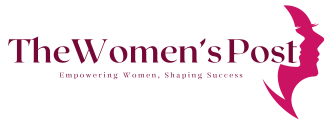Breast cancer is one of the most frequent malignancies in women globally, impacting millions every year. Despite advances in therapy and care, early identification remains critical to increasing survival rates and outcomes. Early detection can dramatically minimise the spread of cancer and improve treatment efficacy. Regular self-examination is one of the easiest and most empowering ways for women to evaluate their breast health. Understanding the significance of breast cancer awareness, early detection, and self-examination is critical for every woman to take proactive efforts to protect her health.
Understanding Breast Cancer
Breast cancer develops when cells in the breast grow uncontrolled, resulting in a tumour. It affects both men and women, but it is significantly more frequent in women. Breast cancer development is influenced by a variety of risk factors, including age, family history, inherited genetic abnormalities (such as BRCA1 and BRCA2), hormonal variables, and lifestyle choices such as alcohol intake, smoking, and inactivity. However, breast cancer can occur in women who have no obvious risk factors, which is why annual breast health monitoring is essential.
The Value of Early Detection
Early identification of breast cancer can result in more effective treatment choices, increased survival rates, and an improved quality of life. When breast cancer is detected early, it is usually limited to the breast, making treatment easier. In contrast, if breast cancer is discovered later, when it has spread to other regions of the body, treatment choices become more restricted, and the prognosis may worsen.
Regular screening and self-examination can help spot abnormal changes in breast tissue before they become more problematic. Most healthcare organisations advocate regular mammograms as part of women’s preventative treatment beyond the age of 40. Mammography, which employs X-ray equipment to check the breasts, can identify tumours.
The Importance of Self-Examination
Self-examination is a simple yet efficient practice that allows women to actively check their own health. It helps women become acquainted with the normal feel and look of their breasts, making it simpler to spot any odd changes or anomalies. While self-exams should not be used instead of routine mammograms, they can supplement other screening procedures and help women detect early indications of breast cancer.
Self-examination consists of visually checking and palpating (feeling) the breasts for any changes. Women should do a self-exam once a month, preferably a few days following their period, when breast tissue is least likely to be swollen or painful. The stages in a breast self-examination are basic.
- Visual Inspection: Stand in front of a mirror and examine for changes in the form, size, or symmetry of your breasts. Pay close attention to any dimpling, redness, or swelling on the skin. The skin should be smooth, with no lumps or obvious anomalies.
- Raising Arms: Raise both arms over your head and check the breasts again. This position makes any changes in the form or size of the breasts more evident than when the arms are at rest.
- Palpation (Feeling the Breasts): Using the pads of your fingertips, softly push around the full surface of each breast. Make tiny, circular motions from the outer edge to the centre of the breast. Make careful to check both the underarm and the upper chest, as cancer can sometimes develop in these areas.
- Check for Lumps or Changes: During palpation, feel for lumps, bumps, or tissue thickening. Lumps may be benign, but if they feel weird or different from your typical breast tissue, see a doctor for additional assessment.
- Nipple Changes: Look for any changes in your nipples, such as discharge (other than breast milk), soreness, or inversion.
What To Look For
While many breast changes are not malignant, some symptoms can cause worry. This includes:
- Lumps or thickening in the breast or underarm region.
- Changes in breast skin such as redness, dimpling, or puckering (similar to orange skin).
- Nipple alterations include inversion, discharge (other than breast milk), and discomfort.
- Pain in the breast that does not correspond to menstrual cycles or size changes.
- Swelling or discomfort in one breast that persists or fluctuates during your menstrual cycle.
It’s crucial to realise that many of these changes might be attributed to non-cancerous illnesses like benign cysts or hormone fluctuations. However, any odd changes should be reviewed by a healthcare expert.
When to See a Doctor?
If you see any of the aforementioned changes or are concerned about your breast health, consult your doctor or a breast specialist. They will do a clinical breast examination and may request further tests, such as a mammography, ultrasound, or biopsy, to confirm the existence of cancer or other abnormalities.
Early identification is critical since breast cancer is usually most curable in its early stages. Regular screening and self-examination help to spot possible indications early on, resulting in better treatment options and outcomes.
Reducing Risk with Lifestyle Choices
While there are no surefire strategies to prevent breast cancer, women can reduce their risk by adopting a healthy lifestyle. These include keeping a healthy weight, being physically active, limiting alcohol use, avoiding smoking, and eating a well-balanced diet rich in fruits, vegetables, and whole grains. Furthermore, nursing has been related to a lower risk of breast cancer, and women who breastfeed for a longer period of time may be less likely to get the illness.
The Power of Awareness and Education
Breast cancer awareness is essential for disseminating information and encouraging early identification. Campaigns such as National Breast Cancer Awareness Month, which occurs every October, are critical in educating the public about the need of early detection and self-examination. Furthermore, communities may organise local events, seminars, and awareness campaigns to encourage frequent screening, educate women about the signs and symptoms, and raise funds for breast cancer research and advocacy.
Breast cancer awareness and early identification by self-examination are critical for improving survival rates and minimising the disease’s effect. By being acquainted with the typical sight and feel of their breasts, women empower themselves to take charge of their health. Regular screening, combined with self-examination, plays an important role in detecting breast cancer early, resulting in more effective therapies and improved results. It is critical that women of all ages, whether or not they have a family history of breast cancer, be aware, practise self-care, and take proactive efforts to check their breast health.
Early diagnosis saves lives, and when it comes to breast cancer, every woman should be confident and prepared to act.
Also read: Cervical Cancer Awareness: Empowering Women Through Prevention and Protection










